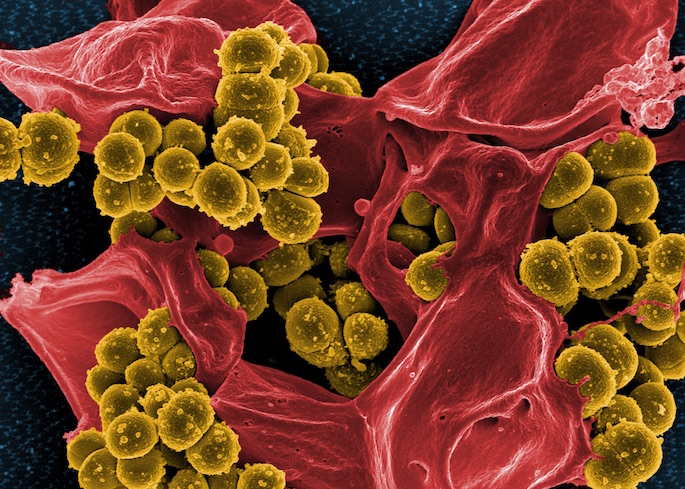Staphylococcus aureus (staph) is a leading cause of hospital-acquired infections and an increasing threat to public health. Enzymes called serine hydrolases modulate host-pathogen interactions, but little is known about this enzyme family in staph.
In collaboration with researchers at Stanford University, Jessica Sheldon, PhD, and Eric Skaar, PhD, used activity-based protein profiling to identify 10 previously uncharacterized staph serine hydrolases.
They showed that one of these enzymes, FphB, is located at the bacterial surface and has increased activity in response to host cell factors. Staph bacteria missing the FphB gene grew in culture but were not able to infect certain tissues in a mouse model. A selective chemical inhibitor of FphB reduced staph infectivity in vivo.
The findings, reported in the June issue of Nature Chemical Biology, demonstrate that FphB is a staph virulence factor and suggest that it may be a viable therapeutic target for staph infections. The study also demonstrates the power of functional proteomics for identifying proteins important to pathogen biology.
This research was supported by grants from the National Institutes of Health (GM111703, EB026332, GM117004, GM118431, AI101171, AI069233, AI117255).















